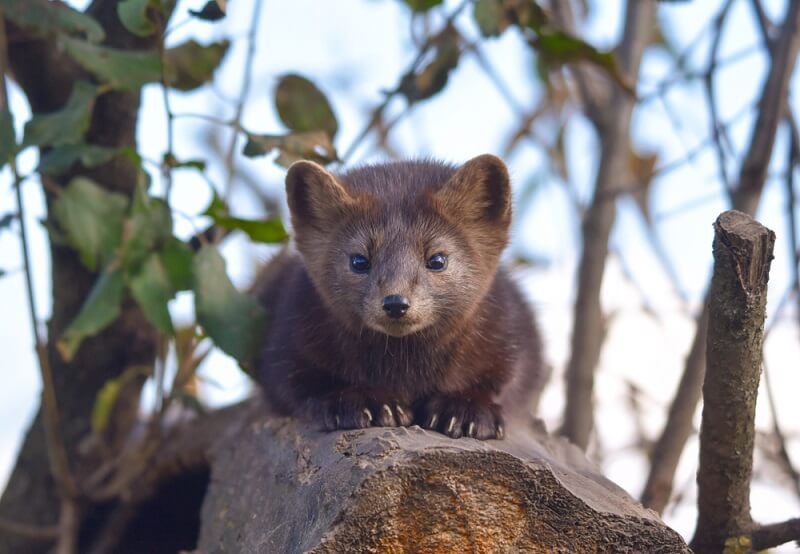
| Kingdom | Animalia |
| Phylum | Chordata |
| Class | Mammalia |
| Order | Carnivora |
| Family | Mustelidae |
| Genus | Martes |
| Species | Martes zibellina |
| Niche | Omnivorous Opportunist |
| Length | 15-22 in (38-56 cm) |
| Weight | 2-4 lbs (800-1800 g) |
| Lifespan | 20 years |
| Social Structure | Solitary |
| Conservation Status | Least Concern |
| Preferred Habitat | Dense Forests |
| Average Litter Size | 1-7 |
| Main Prey Species | Small mammals, mollusks, fish, berries, some plants |
| Predators | Humans, wolves, wolverines, tigers, birds of prey |
The Basics
The sable is a larger member of the martin genus that lives in Russia and the northernmost parts of Japan and China. The sable is an omnivorous opportunist that feeds on fish, small mammals, berries, and the scraps left from wolves and bears. Though the sable is sometimes farmed, it is not domesticated and should not be kept as a pet because it will likely turn mean and aggressive as it ages.
Sables have been prized for their fur for millennia, with historical records indicating their importance to Roman, Mongolian, and several other ancient civilizations. Though the sable was originally hunted for its fur, Russians now farm sables to create fur clothing. The fur of the sable is extremely valuable, as it is one of the softest fur coats in the animal kingdom.

The sable is very closely related to the North American Pine Marten and the European Marten, both of which are slightly smaller. In fact, because all of these animals are in the genus Martes, the sable can interbreed with the pine marten to create a kidu. However, the kidu is typically a sterile creature – like many hybrids.
Though the sable was nearing extinction in the early 1900s, Russian efforts to re-introduce the sable to the wild have been very successful. Today, the sable is considered “Least Concern” species when it comes to conservation – mainly because of these mass re-introductions of the sable to wild places across Russia.
Interesting Insights from the Sable!
The sable has been a fascination of humans throughout human history and helped many early civilizations survive the brutal winters across the northern hemisphere. However, now that we know more about biology – the sable is the perfect creature to explain some very important biological concepts!
Conservation and Animal Use
While the farming and harvesting of the sable for furs may disturb some people, others argue that it is only because humans place a high value on sable fur that the sable has returned from the brink of extinction.

Many animals that are not highly valued go extinct without any effort from humanity to save it. This is what saved the sable, as Russians greatly valued the animal for its fur and wanted to ensure that the sable would be around for future generations. So, in one sense it can be argued that the economic value of sable fur is what saved the species.
However, it should also be noted that the only reason the sable was going extinct in the first place is that it was overharvested in the wild. If the sable did not have prized fur, it may have never been threatened in the first place. In the conservation world, this is an argument that rages to this day.
The Disaster of Common Names
The sable is a perfect example of why common names are so ineffective. If you Google “sable images” it’s likely that you will find not only Martes zibellina, but a number of other completely unrelated species.
In fact, “sable” is now a word used to describe the coat color of many different animals including antelope, German shepherds, cats, rabbits, and several other species. As a coat color, “sable” describes a brown to black coat that is typically darker on the legs.
Plus, “sable” is not even the only name for Martes zibellina. Across its range, the sable is also known as the sobal, Zobel, sabel, zibeline, cibelina, soopeli, zibelina, and kuroten. This is why scientists prefer binomial nomenclature – because we know exactly what species a scientist is referring to when they say “Martes zibellina.”
